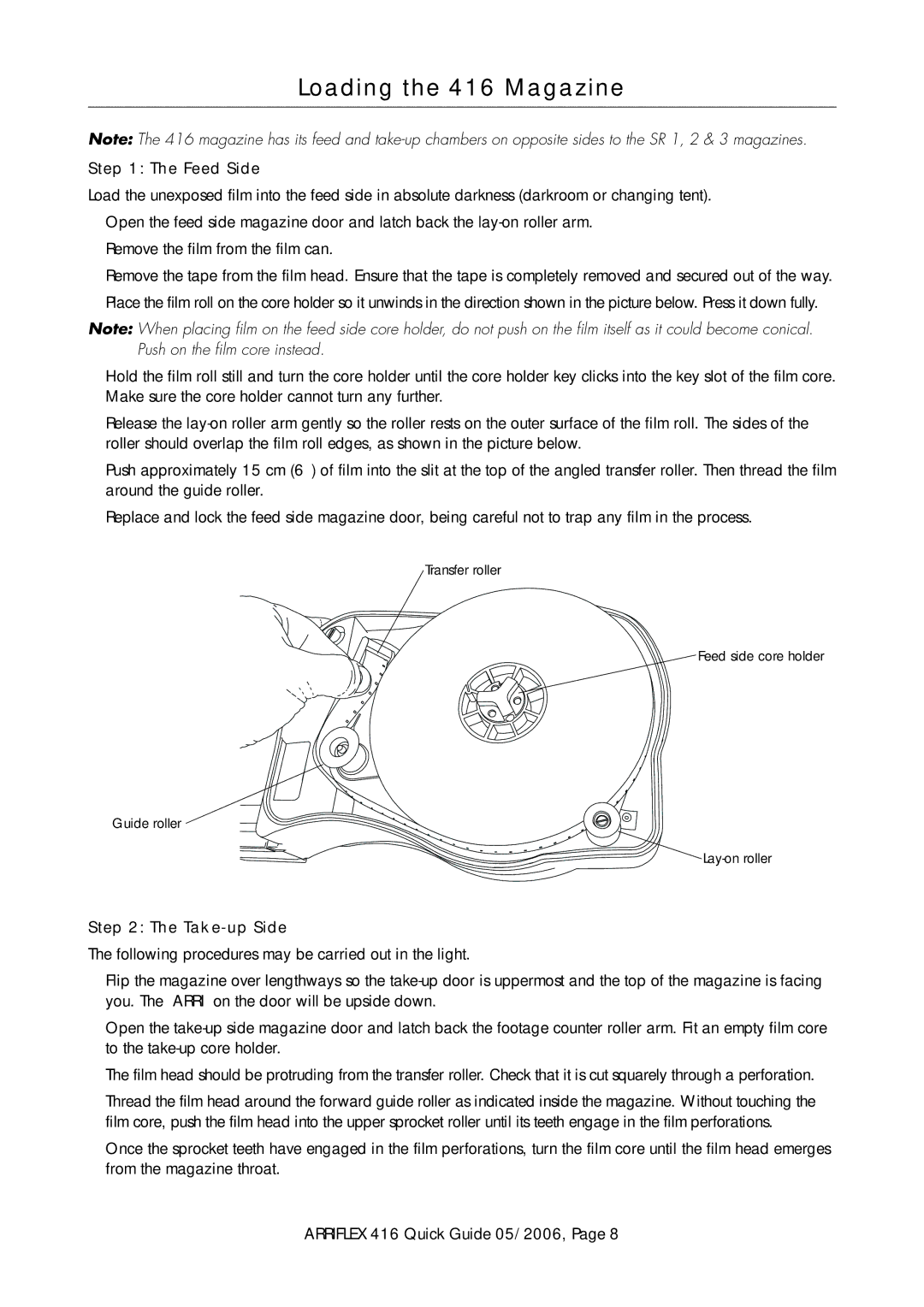416 specifications
The ARRI 416 is a professional motion picture camera that has garnered a reputation for its versatility, reliability, and superb image quality. Renowned for its performance in both film and television production, the ARRI 416 blends cutting-edge technology with a user-friendly design, making it a favorite among cinematographers around the globe.One of the most notable characteristics of the ARRI 416 is its capability to shoot in 16mm format, which provides a unique aesthetic that is often sought after in independent and experimental filmmaking. This camera is equipped with a stunning 16mm gate that ensures exceptional film transport and exposes the film accurately, delivering stunningly sharp images with a distinct visual quality that only film can provide.
The ARRI 416 features a modular design, which allows cinematographers and technical crews to customize the setup according to the specific needs of a shoot. This flexibility means that it can easily be adapted for various shooting conditions, whether in a controlled studio environment or challenging outdoor scenarios. Its compact size and lightweight frame facilitate hand-held shooting, while also allowing for easy installation on drones and other aerial platforms.
Equipped with advanced camera technologies, the ARRI 416 includes features such as a synchronized shutter mechanism that reduces the risk of flicker and enhances the overall shooting experience. Additionally, the camera supports a wide range of lenses, providing filmmakers with numerous creative options to achieve their desired look.
The ARRI 416 also embraces modern technologies, including the integration of electronic components that improve workflow efficiency. This includes built-in displays for monitoring settings and film status in real-time, allowing directors and cinematographers to keep track of their shots without interruption.
Durability and resilience are also key characteristics of the ARRI 416. Constructed with high-quality materials, this camera is designed to withstand the rigors of film production, ensuring consistent performance even in the most demanding environments.
In summary, the ARRI 416 stands out due to its rich feature set, incorporating both traditional filmmaking values and modern technology, making it an invaluable tool for filmmakers aiming to achieve artistic excellence.

